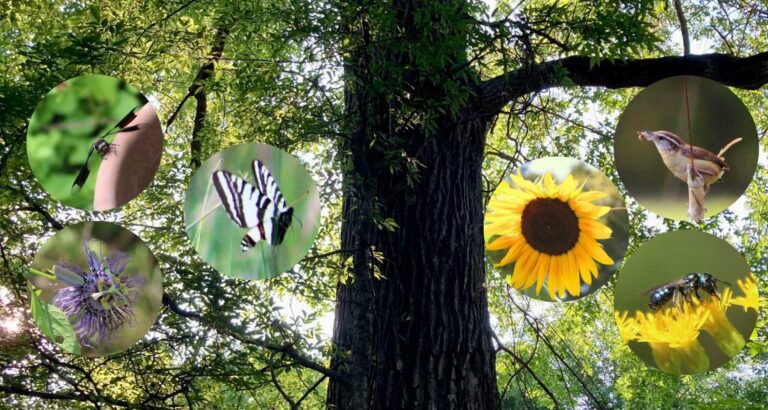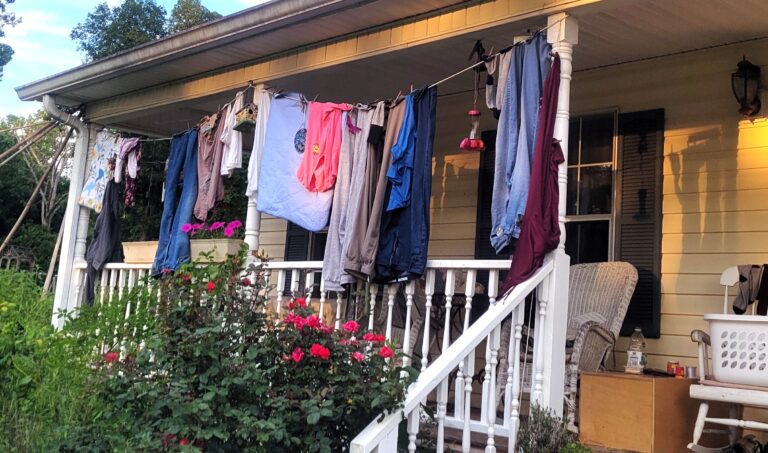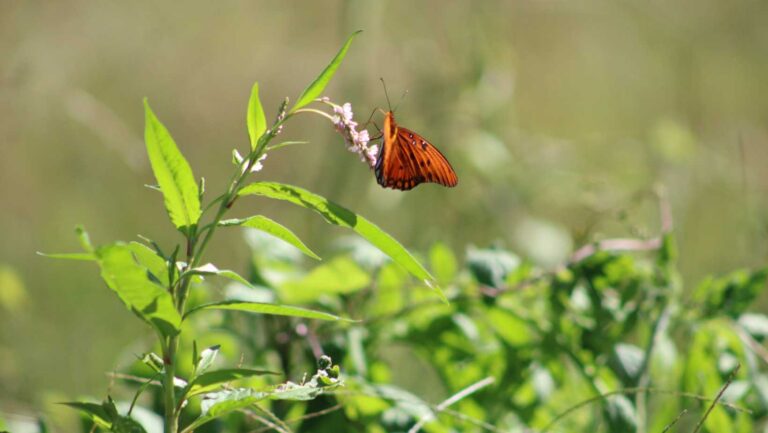Sticks In Wildflowers For Birds
Planting wildflower gardens to attract birds, butterflies, moths and other pollinators is a wonderful and interesting activity that often brings unexpected results. Nowhere is this more demonstrated than our sticks in wildflowers discovery.
Like most actions we’ve taken in our wildflower and native plant patches, our sticks in wildflowers came as the result of a natural need. As we planted wildflower seeds and plants, we were having a hard time remembering where they were. In addition, as taller plants (such as sunflowers and coneflowers) grew, they tended to flop over.
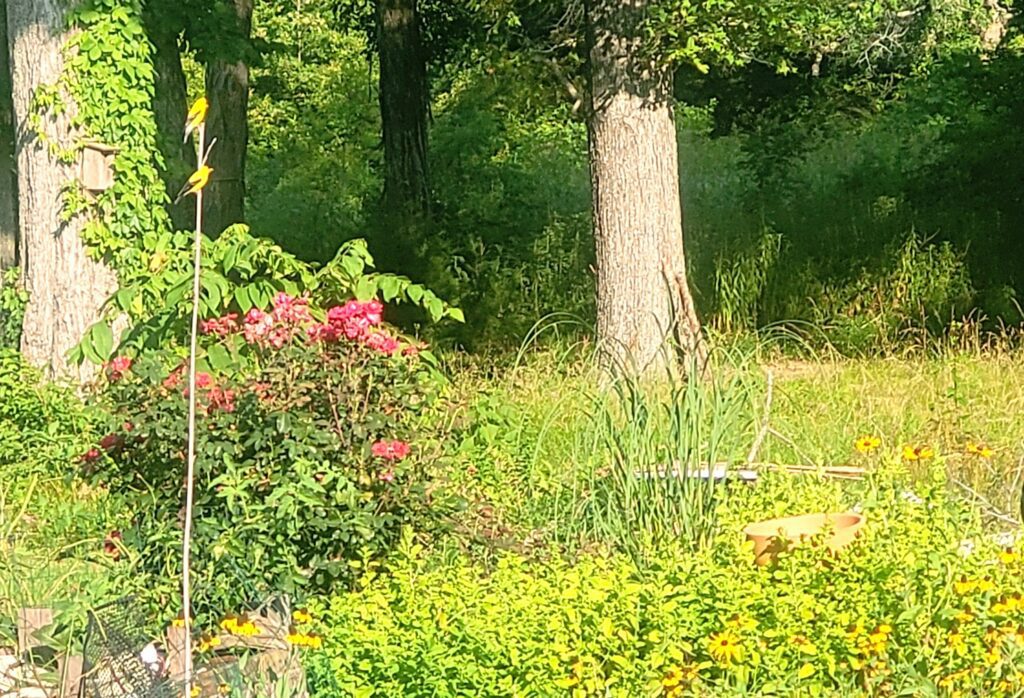
Our solution? We cut non-native privet branches. We also sustainablely harvested native river cane that had fallen over and washed downstream during the regular floods on the West Chickamauga Creek in NW Georgia. Sticking both of those vertically into the ground not only marked our wildflowers and native tree saplings, but gave support to the taller growers, such as sunflowers.
Unexpected Sticks In Wildflowers Benefit: Birds Perch!
Again, like many actions in our wildflowers, we were delighted to discover that the sticks in wildflowers produced an unanticipated result: Birds perches!
Of course, everyone knows that horizontal sticks provide excellent perches for all sorts of birds, from tiny hummingbirds all the way up to raptors and larger birds. But in all my years of birdwatching in Wisconsin, Washington State, Utah, and now in Georgia, I’d rarely — if ever — noticed birds perching on vertical sticks! I mean, how could they? They would have to approach, land, and perch at nearly a 90 degree angle, putting their bodies almost horizontal to the ground! OR they would have to hop on top, on a tiny platform at the top of the stick. And wouldn’t their weight send the stick into wild swaying?
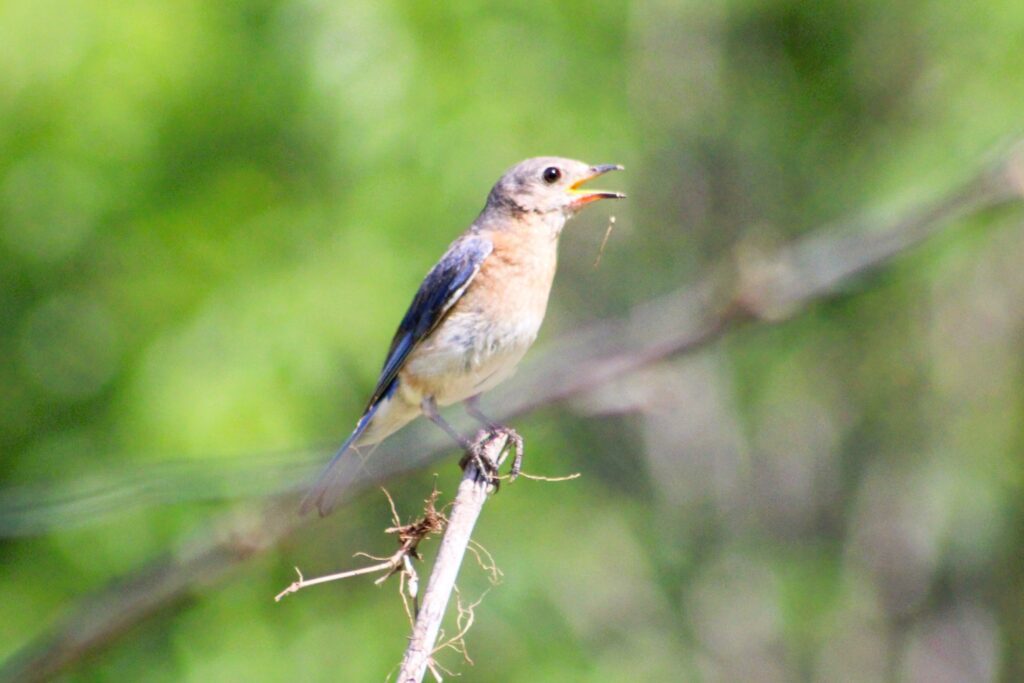
Yet, to our surprise and delight, the birds seemed to love the sticks and canes throughout the yard. Especially with the blossom of the yellow coneflowers, the gold and black goldfinches perch, sometimes two, three, or even four on each stick or river cane! Larger birds, too, such as cardinals, added their bright colors. And it became common for us to spot several finches, a couple of sparrows, and then, at the top, a tiny hummingbird, all enjoying their vantage point from a gently swaying stick or river cane.
Try Different Solutions, Then Embrace The Unexpected
It seems that, as we work and play in and with Nature, she is more than willing to teach us how our efforts can work in unexpected and delightful ways. Now, when we go out in the early morning sunrise, we quietly open our front door and look out into our sticks in wildflowers. We’ve seen dozens of birds, happily perched in these unexpected places, using them as launch pads before they dive into the ripening widlflower seedheads.

